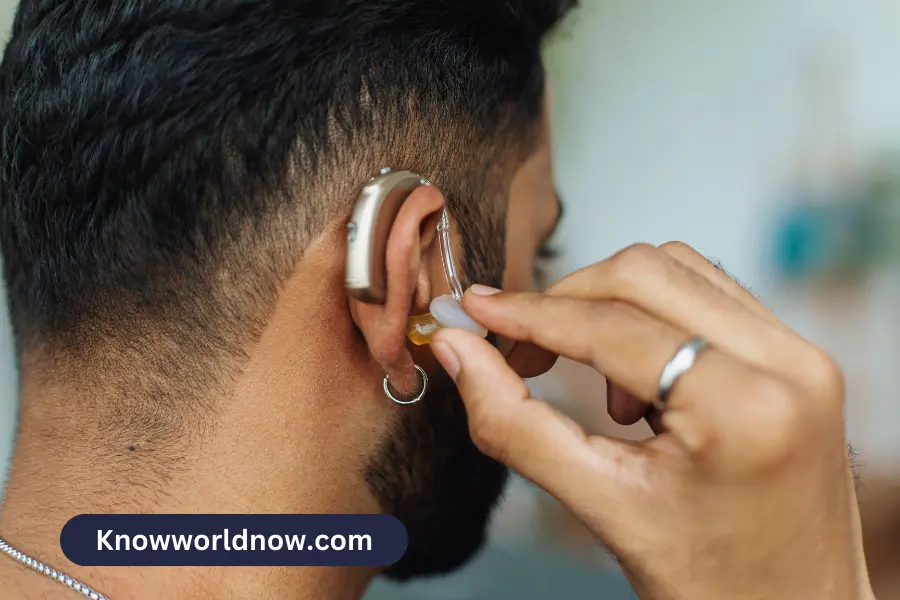Hearing loss affects millions of individuals worldwide, yet there are still prevalent myths and misconceptions surrounding the use of hearing aids. These misconceptions can deter people from seeking appropriate treatment and hinder their ability to improve their hearing and overall quality of life. In this post, we will delve into some common hearing aid myths, debunk them with evidence-based information, and empower readers to make informed decisions about their hearing health.
Myth: Wearing Hearing Aids Makes You Look Old
A significant barrier preventing many individuals from seeking hearing aids is the misconception that wearing them will make them look old or draw unwanted attention. However, modern hearing aids have come a long way in terms of design and aesthetics. Manufacturers now offer sleek, discreet, and even virtually invisible hearing aid options. Some devices are so tiny that they fit entirely within the ear canal, making them virtually undetectable to others. A brand called Audicus, for example, manufactures hearing aids that are so small, you won’t even notice one wearing it. Try reading some Audicus hearing aid reviews online and see how tiny they can be.
Furthermore, it is essential to emphasize that hearing aids are not a symbol of aging but rather a tool for enhancing communication and improving overall well-being. Addressing this myth requires dispelling the stigma associated with hearing aids and promoting a positive attitude towards seeking assistance for hearing loss.
Myth: Hearing Aids Are Only for the Elderly
One common misconception about hearing aids is that they are solely meant for the elderly population. In reality, hearing loss can affect people of all ages, including children and young adults. Noise-induced hearing loss, genetic factors, and certain medical conditions can contribute to hearing impairment at any stage of life. It is crucial to recognize that hearing aids are designed to address a wide range of hearing loss cases and are not limited to a specific age group.
To combat this myth, it is important to raise awareness about the prevalence of hearing loss among younger populations and highlight the benefits of early intervention. By seeking timely treatment and adopting hearing aids, individuals of all ages can mitigate the potential negative impacts of untreated hearing loss.
Myth: Hearing Aids Fully Restore Normal Hearing
While hearing aids are remarkable devices that significantly improve hearing abilities, they do not restore hearing to its original state. This misconception often leads to unrealistic expectations among individuals with hearing loss. It is crucial to understand that hearing aids amplify sounds and make them more accessible, but they cannot replicate the intricate functioning of the human ear.
Hearing aids work by amplifying specific frequencies according to an individual’s hearing loss profile, ensuring clearer and more distinct sounds. However, they may not be able to fully restore hearing in complex listening situations or in cases of profound hearing loss. Nevertheless, they provide substantial benefits by improving speech comprehension, enhancing environmental awareness, and facilitating better communication.
Myth: Hearing Aids Are Uncomfortable and Inconvenient
Another common myth about hearing aids is that they are uncomfortable, bulky, and inconvenient to use. In reality, technological advancements have revolutionized hearing aid design and functionality, making them more comfortable and user-friendly than ever before. Modern hearing aids are smaller, lighter, and custom-fit to each individual’s ear, ensuring a comfortable and secure fit.
Moreover, hearing aids now come with features such as rechargeable batteries, wireless connectivity, and smartphone compatibility, enhancing convenience and ease of use. These devices can seamlessly integrate into one’s daily routine, allowing users to adjust settings, stream audio, and control their hearing aids with a simple tap on their smartphone.
Final Thoughts
Dispelling myths and misconceptions about hearing aids is crucial in promoting awareness, reducing stigma, and encouraging individuals with hearing loss to seek appropriate help. By debunking these myths, we can empower people to make informed decisions about their hearing health and improve their overall quality of life. Remember, hearing aids are not age-restricted, they are available in various discreet designs, they improve hearing but do not fully restore it, and they offer comfort and convenience through technological advancements. Let us break down the barriers and embrace the benefits of hearing aids, enabling a world of better hearing for all.



![10 Best Bags for Nurses | Personal Recommendation [2023] 4 Best Bags For Nurses Reviews in 2021](https://knowworldnow.com/wp-content/uploads/2022/12/Best-Bags-For-Nurses-Reviews-in-2021.webp)



![F95Zone Games - The Ultimate Guide for 2021 [F95Z Guide] 8 F95Zone Games](https://knowworldnow.com/wp-content/uploads/2021/07/ArTtW5LrK3b-z-0-y-637f48d86203817a9042a857.webp)